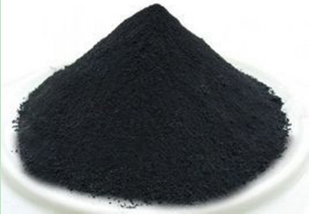What is Graphene?
Graphene is an extremely popular material within scientific research. When a simple method of exfoliating single layers of graphene from bulk graphite was discovered in 2004, it marked the start of the 2D materials era.
The properties of single layers were found to be drastically different from those of the bulk material. Many of these properties exceeded those of any known material. Today, graphene is still proving to be one of the most exciting materials around. Since the start of 2018, there have already been 27,000 publications on graphene worldwide.
Initial work on graphene showed that its properties vastly exceeded those of the bulk graphite that it was taken from. Properties such as the strength showed that a single layer of the material was over 200 times stronger than steel; the mobility of both holes and electrons were comparable to that of bulk metals such as copper; the thermal conductivity is so high as to be considered ballistic without impedance from the material itself; and single layers have a high opacity with over 2% of light at the near infrared being absorbed.
All of these unique properties mean that graphene could find use in a wide variety of applications including electrochemical capacitor devices, anti-corrosion coatings, composite materials, transparent conducting films, thermal pastes, as well as sensing and biosensing applications.
Graphene powder is globally considered as being a ‘wonder material,’ owing to its impressive properties. It is also known as graphene nanopowder, due to it nano-structural behavior. It is one of the strongest and ideal conductors of heat and electricity. This immensely versatile material is finding increasingly widespread application in research and diverse industries all over the world.

Applications of graphene
Graphene is a disruptive technology; one that could open up new markets and even replace existing technologies or materials. It is when graphene is used both to improve an existing material and in a transformational capacity that its true potential can be realised.The vast number of products, processes and industries for which graphene could create a significant impact all stems from its amazing properties.No other material has the breadth of superlatives that graphene boasts, making it ideal for countless applications.It is many times times stronger than steel, yet incredibly lightweight and flexible.It is electrically and thermally conductive but also transparent.It is the world's first 2D material and is one million times thinner than the diameter of a single human hair.
Application areas
Transport, medicine, electronics, energy, defence, desalination; the range of industries where graphene research is making an impact is substantial.
And this is only the start. These are only the first steps. The potential of graphene is limited only by our imagination.
Biomedical
Graphene's unique properties allow for ground-breaking biomedical applications. Targeted drug delivery; improved brain penetration; DIY health-testing kits and 'smart' implants.
Graphene-based composite materials
Graphene is a material with a huge amount of outstanding qualities; strength, flexibility, lightweight and conductivity.
One of the simplest and most effective ways of harnessing the potential of graphene is to combine it with existing products – so called composite materials.
The impact of graphene-based composites is set to reverberate throughout countless industries, enhancing performance and increasing application possibilities.
Electronics
Graphene has the potential to create the next-generation of electronics currently limited to sci-fi. Faster transistors; semiconductors; bendable phones and other electronics.
Energy
Imagine fully charging a smartphone in seconds, or an electric car in minutes. That's the power of graphene.
Graphene membranes
Imagine clean drinking water for millions in developing countries. The development of graphene-based membranes at The University of Manchester brings that possibility closer.
Sensors
Graphene detects. Ultra-sensitive sensors made from graphene could detect minute dangerous particles helping to protect potentially dangerous environments.


